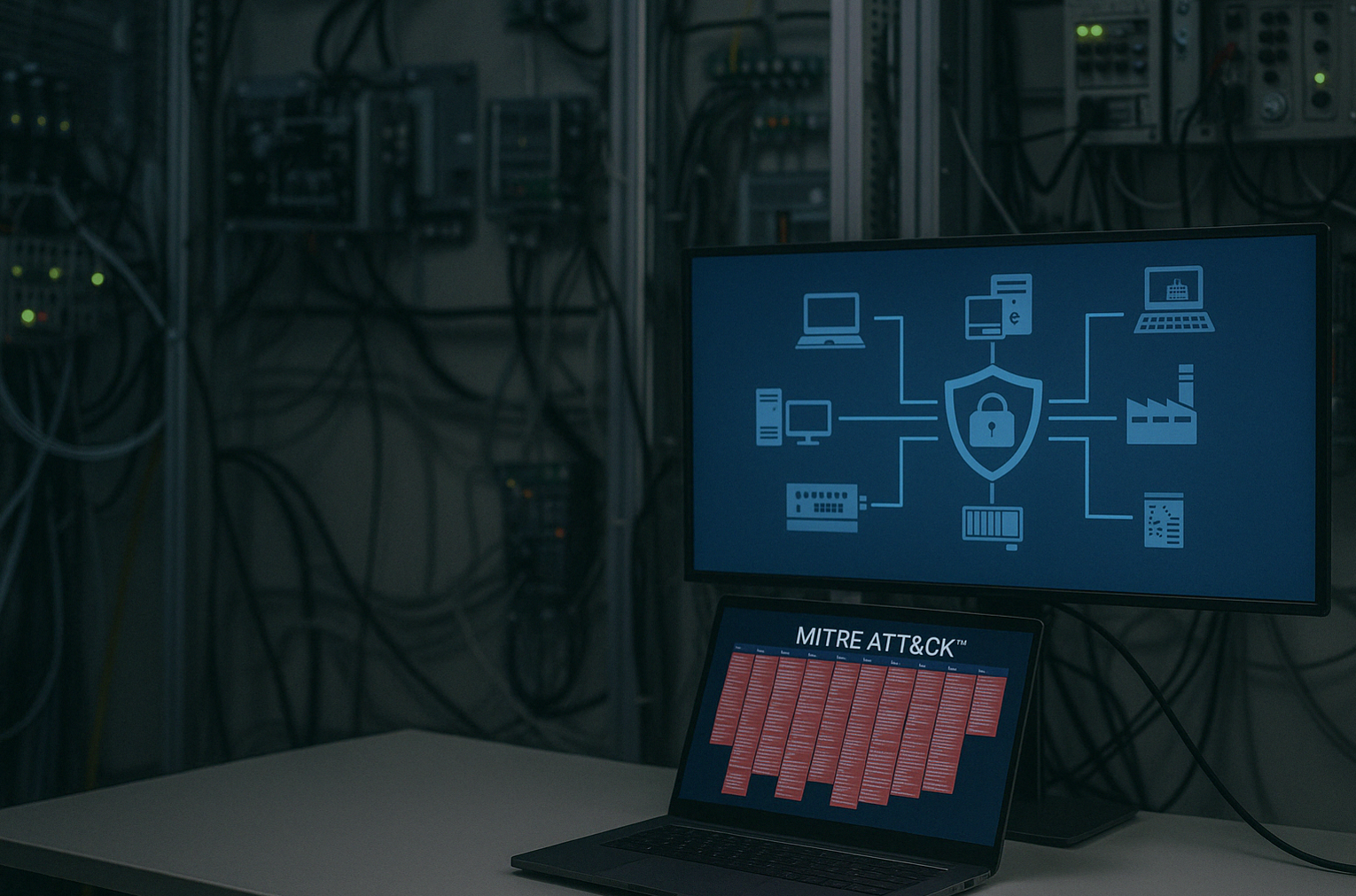
- Digitalization
- Mobility & Infrastructures
Categories:
The cybersecurity threat landscape in Operational Technology (OT) / Industrial Control Systems (ICS) has evolved significantly, with adversaries employing increasingly sophisticated techniques to disrupt operations and compromise critical infrastructure such as Energy, Water, Data Centres, Defence, Healthcare, Manufacturing and Transport sectors. The MITRE ATT&CK for ICS framework has emerged as a vital tool for understanding adversarial behaviour and improving cybersecurity resilience in OT environments. As a structured, intelligence-driven knowledge base, the MITRE ATT&CK framework for ICS offers a comprehensive view of adversarial behaviors. It enables asset owners, integrators, and operators to assess vulnerabilities, design robust security architectures, and continuously test the effectiveness of their controls within the OT cybersecurity lifecycle.
This raises a question: How can the MITRE ATT&CK for ICS framework enhance detection, testing, and defensive maturity across the operational technology (OT) lifecycle?
Understanding MITRE ATT&CK for ICS
MITRE ATT&CK (Adversarial Tactics, Techniques, and Common Knowledge) for ICS is a curated knowledge base developed from real-world cyber incidents that have impacted industrial environments. Unlike traditional approaches that rely heavily on indicators of compromise (IOCs), ATT&CK focuses on the behaviors and tactics adversaries use throughout an intrusion, providing defenders with greater context and durability in detection.
Tactics represent the attacker’s objectives, such as gaining initial access or impairing process control, while techniques describe how those objectives are achieved.
The ATT&CK ICS matrix provides detailed information on each technique, including a description, targeted assets, known use cases, and potential mitigations. This framework helps defenders visualize how attackers operate within OT systems, from the point of entry through to their final objectives. For example, an adversary may gain initial access through a remote service or exploit, move laterally using valid credentials, and ultimately impair process control through manipulation of engineering workstations or PLCs.
Using MITRE ATT&CK for OT cybersecurity risk assessment
In the context of risk assessment, MITRE ATT&CK supports a threat-informed approach. Rather than relying solely on hypothetical vulnerabilities, organisations can evaluate their systems based on documented attack methods. This allows risk assessments to be grounded in reality, using observed adversary behaviors as the basis for identifying weaknesses in system architecture and operational practices.
By mapping specific techniques to systems and processes within an OT environment, security teams can more accurately assess threats.
Applying ATT&CK to secure system design
Designing secure OT systems requires anticipating how an adversary might attempt to compromise them. The ATT&CK framework provides insight into these methods, offering actionable guidance during the design phase. For instance, understanding that attackers often use credential dumping to escalate privileges can inform decisions about password management, access control mechanisms, and endpoint hardening.
Security zoning and segmentation strategies can also benefit from ATT&CK. By analysing common pathways adversaries use to move laterally within a network, designers can create barriers that inhibit movement between zones, such as isolating safety-critical systems from business networks. Addressing these considerations early in the design phase helps reduce the risk of compromise and minimises the potential impact if an incident does occur.
Supporting testing and validation with ATT&CK
The MITRE ATT&CK framework can be used for testing and validation, and is widely adopted for simulating realistic attack scenarios in both red and blue team exercises. These simulations help assess the ability to detect, respond to, and recover from cyber incidents. For example, conducting a simulated attack using techniques from the ATT&CK matrix allows to validate detection capabilities and identify gaps in monitoring.
Also, the framework enables red teams to emulate a broad range of attacker behaviours without requiring detailed intelligence on a specific adversary. Meanwhile, defenders can build scalable detection rules that apply across various scenarios, enhancing the return on investment.
Improved detection strategy
The framework supports a layered detection model that include:
- Detection based on configuration (baseline deviation)
- Behavioural modelling (anomalous behaviour)
- Detection based on indicators (known signatures)
- Threat behaviour detection (tactics and techniques)
Using ATT&CK, teams can give priority to detecting threat behaviours and enrich it with configuration and modelling data to focus investigations and minimise false positives.
Contextual awareness
Unlike many black-box detection models, ATT&CK provides contextual insight into each technique and tactic. This is particularly important in OT environments where operational context matters as much as the cyber signature. Understanding whether an activity targets an PLC, HMI, Workstation or network equipment provides essential clarity for the analysis of the root cause. It also enhances situational awareness by enabling organisations to track adversarial activity trends and benchmark their maturity against known behaviours.
Enhanced incident response
Mapping detections to MITRE ATT&CK techniques enables organizations to develop focused incident response playbooks. These playbooks provide analysts with clear, step-by-step guidance for validating and containing threats. As living documents, they evolve over time, incorporating insights from emerging threat scenarios and past incidents.
Also, ATT&CK extends its value beyond initial detection by aiding in post-incident investigations. When anomalies occur such as an unexpected PLC shutdown, ATT&CK’s behavioral context helps uncover underlying causes like lateral movement, privilege escalation, or misconfigured access controls.
Alignment across stakeholders
ATT&CK provides a common lexicon for security consultants, engineers, incident responders, executive leadership, and external stakeholders. This shared language improves communication during security planning, security risk assessments, project delivery, red and blue team operations, and incident investigations.
It offers a standardised way to discuss threats, facilitating alignment between technical and executive stakeholders.
The MITRE ATT&CK for ICS framework is a powerful tool for advancing the cybersecurity maturity of OT/ICS environments. By embedding ATT&CK into risk assessment, system design, testing and operation processes, organisations gain a deeper understanding of their threat exposure and can take targeted actions to reduce it. The result is a more resilient and secure industrial operation, capable of withstanding the sophisticated attacks observed in a world where adversaries continuously evolve.
- cybersecurity
Tags:
Soroush Tazerji
Director de servicios de seguridad de Tactix Sener Group
Soroush is Director of Security Services at Tactix Sener Group. He has extensive experience in large-scale railway projects in Australia, North America, and the Middle East. His expertise encompasses full project lifecycle management, including the design, implementation, testing, installation, commissioning, and operation of cybersecurity technology systems and operations. He has successfully provided cybersecurity solutions for various ICS/IACS systems, managed major cybersecurity improvement programs, and established cybersecurity operations and response units that are part of the Cybersecurity Operations Center (CSOC) for Critical Infrastructure. He also contributed to the development of international cybersecurity standards and automation and control systems.









